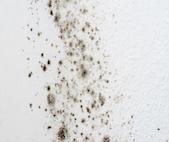Mold

Research Overview
Status: Ongoing
Substances:
Aspergillus versicolor mold
Nominated:
December 2001
Background Information
NTP is currently conducting studies to better understand how exposure to mold may cause disease. Areas being studied include:
- Fungal organisms which may be causing human health effects
- Target organs for fungal toxicity
- Dose-dependent effects, with emphasis on respiratory and immune health effects
- Identification of biomarkers of exposure and effects
There have been many reports connecting mold exposure to a variety of symptoms including allergic, respiratory, and neurological problems. Increased exposure to mold may be in part due to:
- Natural disasters
- New construction methods
- Better sealing and insulation in buildings
These NTP studies will help us understand the potential causes of symptoms from mold exposure, with the goal of creating healthier buildings and reducing mold-related health issues.
NTP Studies & Findings
NTP is conducting numerous studies in mice to identify potential harm from short and long-term exposure to select molds. These studies will provide toxicology data which can be used by:
- Other government agencies
- The public
- Other stakeholders
The table below lists ongoing NTP studies on molds which include a link to the testing page and any reports or status updates.
| Mold | Commonly Found | Testing Status |
|---|---|---|
| Aspergillus fumigatus | Damp indoor environments and on food products | Completed |
| Aspergillus versicolor | Damp indoor environments and on food products | Ongoing |
| Damp building mold mixture | Damp areas of buildings | Planned |
| Stachybotrys chartarum | Damp areas of homes and buildings | Completed |
| Stachybotrys chartarum strain 2 | Damp areas of homes and buildings | Completed |
| Water damaged building mold mixture | Damp areas of buildings | Planned |
Informational Resources
Fact Sheet and NIEHS Health Topic
- Mold
Updated March 2025 - NIEHS Health Topic: Mold
Updated April 2025
Recent Publications
- Croston TL, Nayak AP, Lemons AR, Goldsmith WT, Gu JK, Germolec DR, et al. Influence of Aspergillus fumigatus conidia viability on murine pulmonary microRNA and mRNA expression following subchronic inhalation exposure. Clin Exp Allergy. 2016 Oct;46(10):1315–1327.
- Nayak AP, Green BJ, Lemons AR, Marshall NB, Goldsmith WT, Kashon ML, et al. Subchronic exposures to fungal bioaerosols promotes allergic pulmonary inflammation in naïve mice. Clin Exp Allergy. 2016 Jun;46(6):861–870.
Other Resources
- Mold – NIEHS
- Dampness and Mold in Buildings – National Institute for Occupational Safety and Health
- Mold – Centers for Disease Control and Prevention
- Mold – Environmental Protection Agency
Stay Informed & Contact Us

Stay Informed
Subscribe to receive email to stay informed about mold research and other NTP information.
Contact Us
For questions or additional information, email us or use our contact form.

